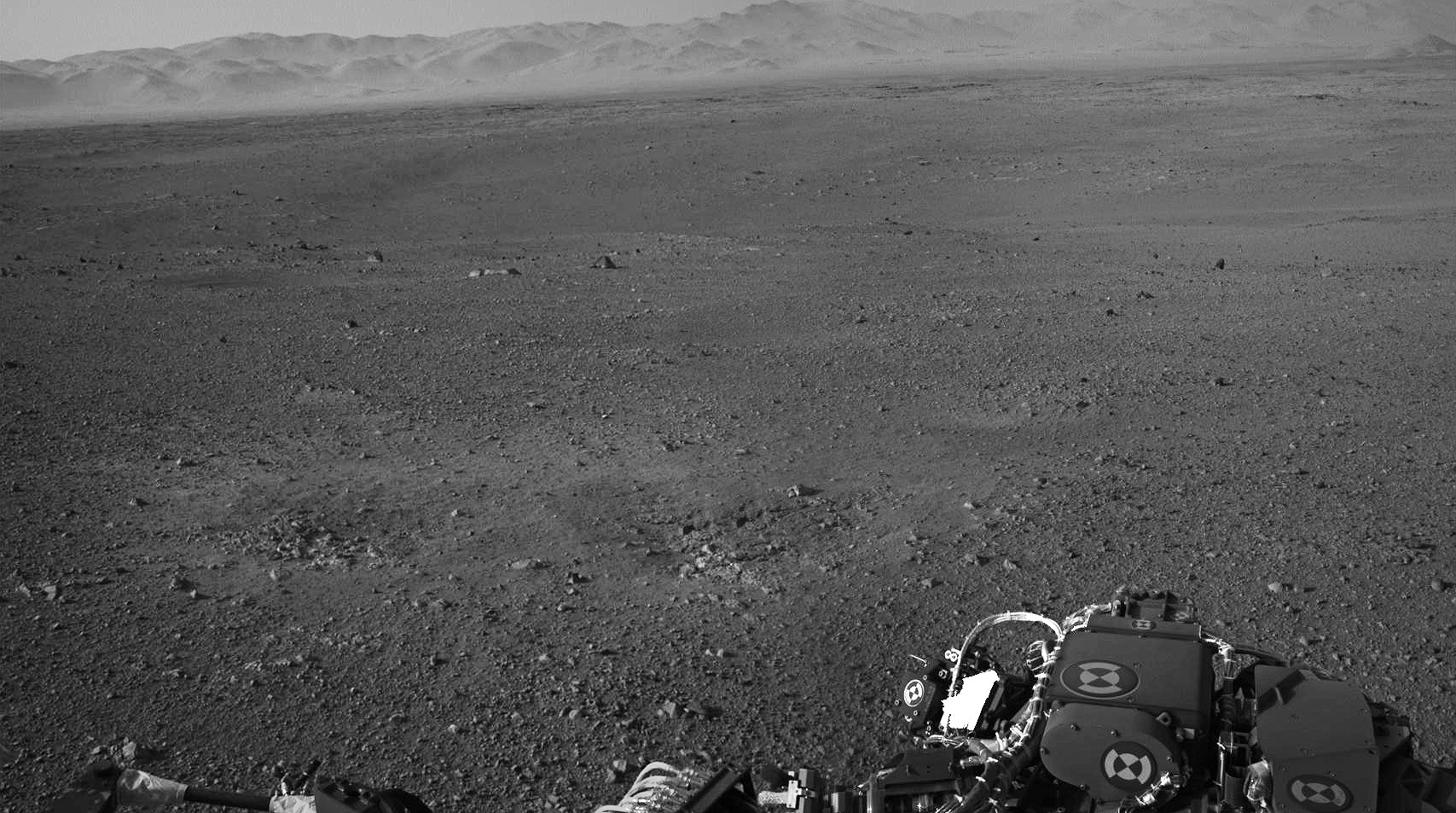Taken this morning (mission Sol 2) with the rover’s left Navcam, here’s a high-res panorama of Curiosity’s view at its landing site within Gale crater. The wide-angle view was assembled from two separate raw images, so while the mountainous rim of the crater is lined up horizontally there’s some distortion in alignment of objects closer to the rover due to the angle of the Navcam lens. Still, it’s a very cool view of Curiosity’s surroundings!
See the latest images from the MSL mission here, and check out 3D anaglyph images from Curiosity here.
Image: NASA/JPL-Caltech. Edited by J. Major.
(Image updated to link to full-size version.)


Thanks Jason! THAT’s the link I was looking for!
The two pits visible in the near foreground look like they may have been/were scoured out by two of the retro rockets on the ‘Sky Crane’? VERY interesting. Says something about how loose the surface soils are anyway… how much dust therein.
I don’t understand the need to take a load of micro images and composite them together. Is it to get a really high res image? Why not just super glue a kodak digital camera on top and take a single photo?
*semi-joking…
One big photo would chew up a lot of transmission time. It’s easier to break it up and send it part by part.
Each of these tiny images is a thumbnail of a full-resolution image that’s still being stored in the camera’s buffer. They downloaded these thumbnails first because they are still extremely limited with respect to bandwidth. When they first landed they were getting 30-60 kbps, and they’ve now increased it to around 200 kbps but only when the orbiters are in the perfect position to relay data, which happens only a couple of times a day. By downloading the thumbnails, they can get a complete overview of the site for the bandwidth that would be required to download just one hi-resolution image. Once they get their bandwidth up (which should occur slowly over the next couple of weeks) they will be able to reach 2 mbps speeds under optimal conditions…but they will still have to prioritize and will be using thumbnails like these to select the images and data they are most interested in. Some of these instruments will be recording gigabytes of data when they’re in use…gigabytes that will take some time to download. We should get used to delays of weeks between data collection and download.
tinyurl.com/cyk9xz2